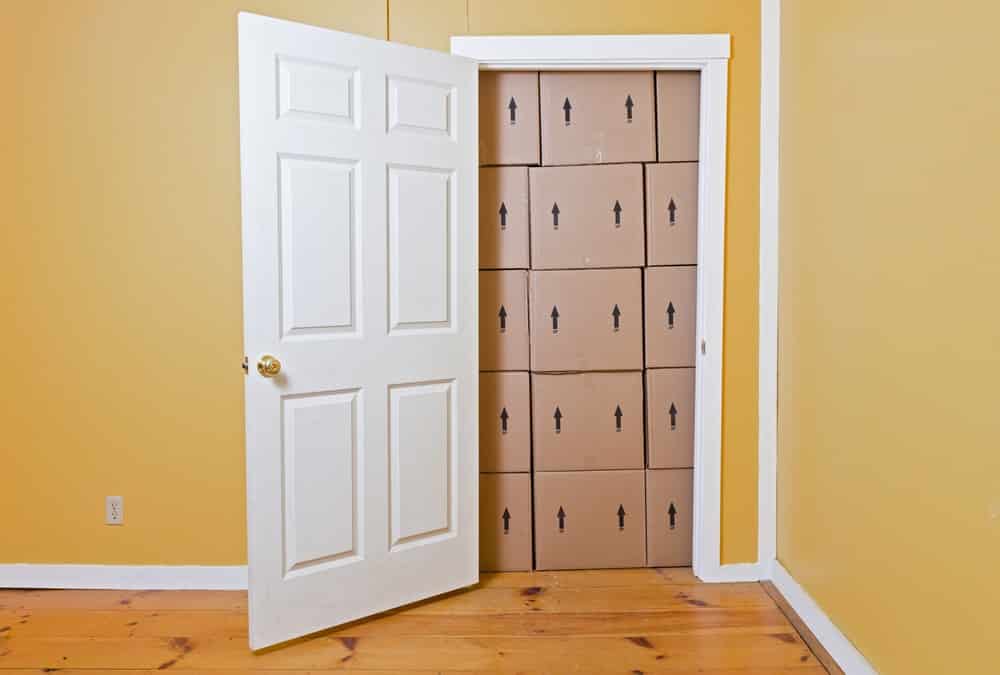How to Handle the Many Challenges of Drop Shipping
If you spend any time on Quora, you'll know that Capacity CSO Thom Campbell is a frequent contributor on a variety of subjects, including order fulfillment. Thom recently weighed in on the many challenges of drop shipping and the costs of fulfillment, so we thought it valuable to gather his thoughts on the subject into one place... here!
There are various pieces to the puzzle, which we've broken down into the sections below. If you prefer to read Thom's answers in the original context, you can also view all of his responses on Quora here.
 Physical & Technological Challenges of Drop Shipping
Physical & Technological Challenges of Drop Shipping
If you're not a professional order fulfillment service provider, you have to consider the technology and space required to store, pick, pack and ship products.
This all-inclusive approach means you're less likely to be caught out by unanticipated costs that eat into your profit margin. When orders start heading out of the warehouse doors, it's much harder to get a handle on costs and make the necessary adjustments to your operation.
Suffice it to say, there's a lot to be said for getting this one right the first time around! Here are some of the aspects you'll need to factor in:
Space
Before we get into the technological requirements, let's take a second to think about simple, physical space. Namely, do you have enough of it to run your fulfillment today, tomorrow, and even a year or two down the line?
E-commerce fulfillment demands a larger storage footprint than traditional merchandise handling.
On a per order/per unit basis, shipping smaller volumes to many different locations costs more and requires a significantly different system than bulk shipments to retail stores.
If it's still early days for your brand, be ready for the growing demands on space: your garage may soon floweth over.

Warehouse Management Software (WMS)
For those shipping only a single SKU (stock keeping unit), you can probably forego inventory management technology. However, when you are shipping hundreds or thousands of SKUs, it's time to employ another handy acronym, a WMS.
While a paper-based system can be maintained by a warehouse manager with a mind like a memory palace, we mere mortals prefer to fall back on technology. A WMS gives you barcode items (cases, pallets, even units) that can be tracked anywhere in a facility equipped with barcode-marked, scannable locations.
Order Management System (OMS)
The other potentially useful tool in your order fulfillment kit is an OMS. This system does exactly what you'd expect, letting you view orders, maintain FIFO (first in first out) methodology, and generally helping to keep your head straight.
The organizational advantages will benefit everyone from warehouse workers to customer service and even the accounting department, who can usually integrate the OMS software with their own software to reduce entry errors and improve data flow. Speaking of which...
Electronic Data Interchange (EDI)
Finally, if you’re going to drop ship in volume, it will probably involve multiple retailers. Many of them will use EDI, which means it's time to review how you integrate systems and transmit order data.
Some retailers will offer the option to go into a portal and pull down orders, process them in the appropriate manner, and then upload tracking. That’s fine for a few orders a day but bulk you need an integrated approach. This can be accomplished via a VAN (value added network) or professional EDI mapping service provider.
Very large companies can map X12 (the data format for EDI) directly into their systems, but that’s not practical for most of us, and so we use providers who can offer both a portal-based and fully integrated service.
Yes, this section reads like an orgy of acronyms. Contemporary logistics grew out of the military with a similar fondness for this kind of jargon. None of it is rocket science, but it is complex, especially at scale.
In fact, scale is crucial in this business. As you grow and expand, you’ll need to add more space, systems and the people to handle them.
As you scale further, you’ll need to revise and upgrade all of that. Your people will also need to receive training and direction to make it work.
On top of all of that, you'll need to honestly and comprehensively appraise the costs of running this operation. After all, if most of your profit margin on a star product is eaten up by the cost of getting it to your customer, it's time to find a better way to make that happen.
 Assess the (Full) Cost of Order Fulfillment
Assess the (Full) Cost of Order Fulfillment
This has to include fulfillment as well as shipping. That means the full cost to store, pick, pack and ship the orders.
It also includes getting the data out of whatever platform you use to sell your products, then getting the tracking and shipment confirmation information back into that platform within your SLA (service level agreement) requirements for that platform or retailer. As you can tell, there are many underlying costs that we see business owners forget to remember over the years!
Cost of Shipping
The shipping cost is going to be part of the economics whether you pay or the retailer, who is fobbing the heavy lifting off on you, foots the bill.
The advantage to the latter is that the retailer has very deep discounts, which should improve your margin (emphasis on the ‘should’). That is, if you are shipping for WalMart.com, you can bet they have some compelling rates with UPS and FedEx.
The disadvantage to that is in the event there are claims, you as the shipper will be required to handle them. This is a real and painful administrative burden. The carriers don’t want to pay out and the retailer will penalize you for failing to resolve the claim. When you have any significant volume, the number of claims and the associated costs will quickly add up.
The good news is that you’re only likely to drop ship on the retailers’ account if you have a ton of volume.
If you are like most folks you will therefore likely pay for shipping. You can work with the carriers to get aggressive rates, but until you have volume you will be much closer to published rates. That’s fairly steep.
Typically, a 1-2 pound package going to Zone 2 (the zone nearest you) is going to be $8-10. You can get assistance with zones and rates from the carriers online, FedEx here and UPS here, for example.
There will be additional charges like fuel surcharges, residential surcharges, and accessorial charges (signature required, rural delivery, etc.) Peak season surcharge is the latest to be introduced by UPS, although FedEx will not follow suit this year, making the 2017 holiday season all the more complicated.
The carriers do not make it easy to model your costs, but you can come close with the information available online and some careful study.
If you look to ship more economically you will want to look at hybrid services like UPS SurePost or Mail Innovations or FedEx’s SmartPost. These involve inducting into the UPS/FedEx networks which then hand it off to USPS for the last mile. The costs are roughly half the straight parcel carrier Ground Residential rates.
Finally, you can ship via USPS, which many small businesses find just dandy. Some prefer Priority Mail for tracking, but you really only get a binary indication of whether it got there or not.
With non-hybrid UPS and FedEx, although they are more expensive, you have scans at every step of the journey. This can go a long way to cutting down on customer service complaints and the intangible cost of a degraded brand image.
 Fulfillment Costs
Fulfillment Costs
Assuming you have a handle on shipping, next on our agenda is the cost of fulfillment.
Order fulfillment is something you can either do out of your garage, your own warehouse, or via a third party provider. Either way, there is labor, space, and if you have any volume, technology. All of these add to your cost of goods sold (COGS).
You may also pay for the freight to ship goods to you, or to your provider. These need to be factored in as well.
The percentage of gross revenue represented by fulfillment varies as widely as the cost of the goods themselves. For those verticals we are most familiar with, pick and pack services typically incur between 5 and 10% of gross.
That means that if you’re selling a picked and packed case of skin care items for $100 retail, you can expect to pay up to $10 to fulfill it. If the goods are lighter or higher value that percentage can vary widely. If you ship in full cases, like a wholesale distributor, those costs are typically between 2 and 4% of gross, because you’re shipping for more but with a lower margin.
There are of course many examples which fall far outside these ranges. Generally speaking, you need to calculate and express your fulfillment costs as a percentage of gross. It’s also important to understand that every single order may not be profitable. You may decide you want to ship nationally, or globally, and to have that reach you may want to have some loss leaders. These are orders shipped which do not make you money, but in some way build your brand equity.
At the end of the day, on a blended basis you need to be sure your overall business is making money. As my Uncle Hal so incisively asked when we were starting our business: will it support you?
Those other costs are often lost on new business operators. It’s easy to think of your garage as a sunk cost which you don’t need to recover, but you need to know what that cost is, because it’s part of the cost of doing business. What is the cost of your home office? This is important not just for tax purposes, but because you need to be brutally honest with yourself about all the costs going into your business. Of all of those, your own time is the one most frequently undervalued.
This is the underlying reason why many companies outsource their order fulfillment to companies like Capacity. The challenges of drop shipping and complexities of fulfillment costs alone make it worth considering a partner. These owners choose to focus their irreplaceable time on product development, merchandising, marketing, and other things that only they can do.
 Physical & Technological Challenges of Drop Shipping
Physical & Technological Challenges of Drop Shipping Assess the (Full) Cost of Order Fulfillment
Assess the (Full) Cost of Order Fulfillment